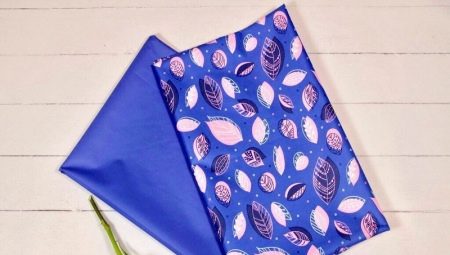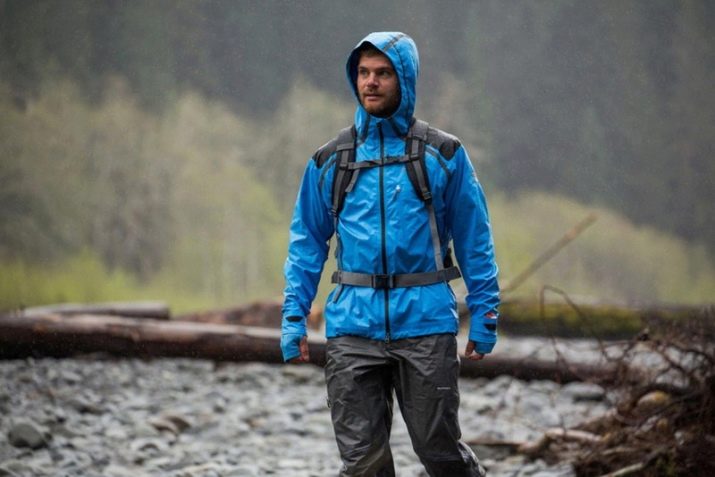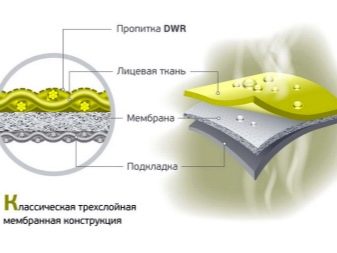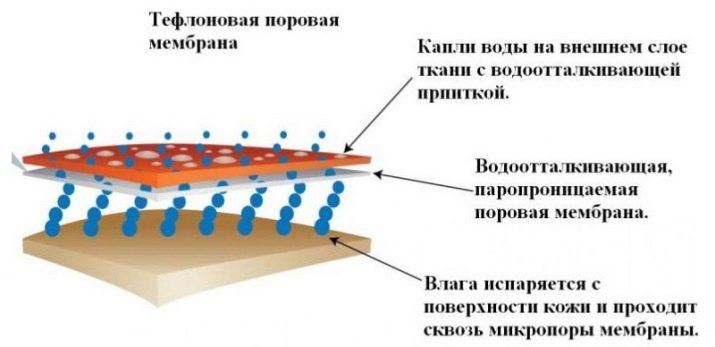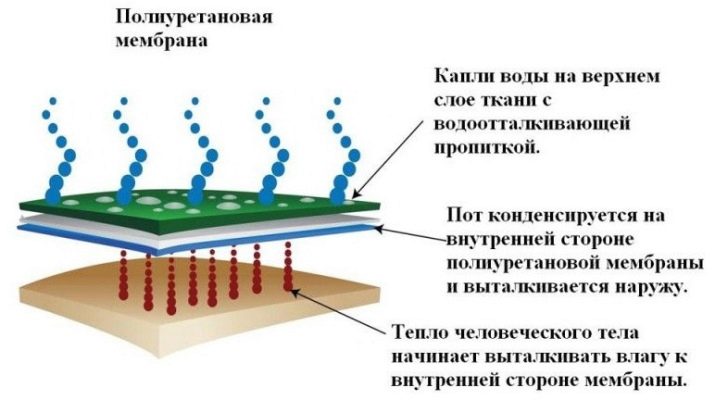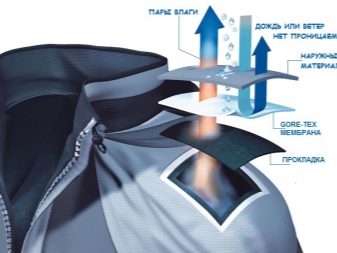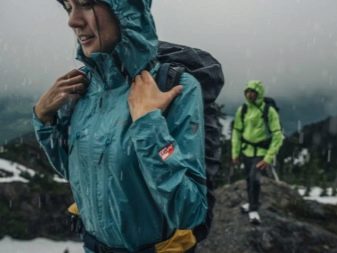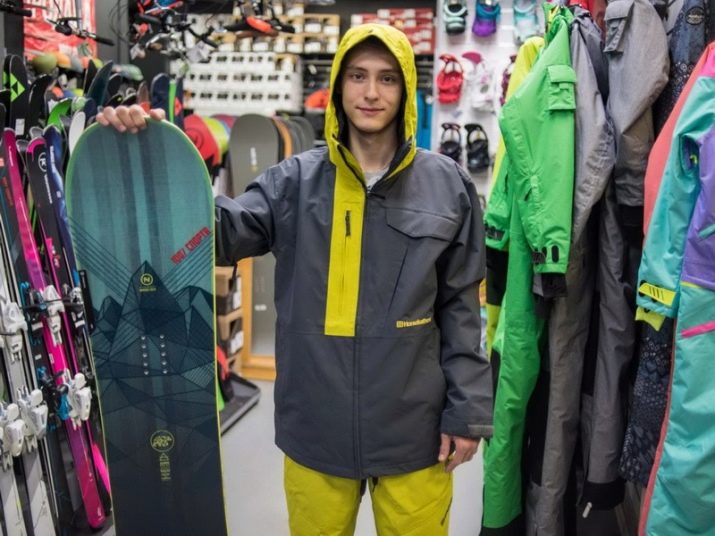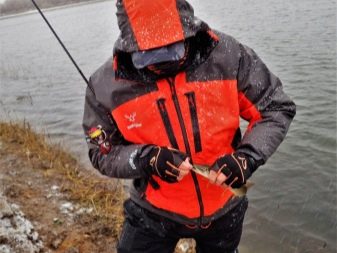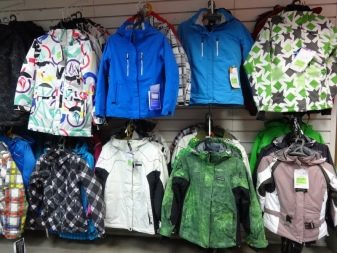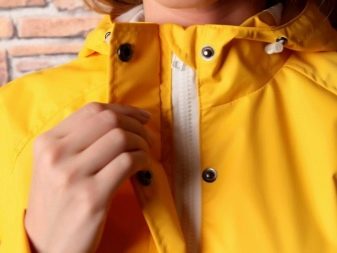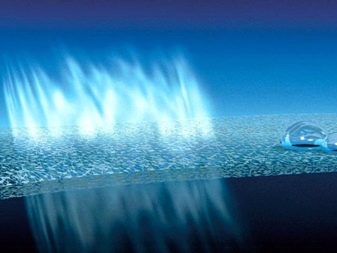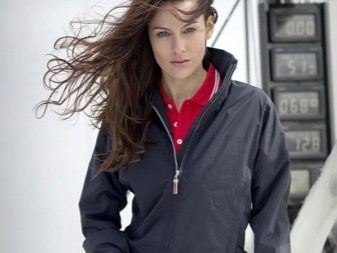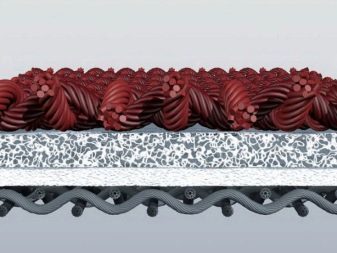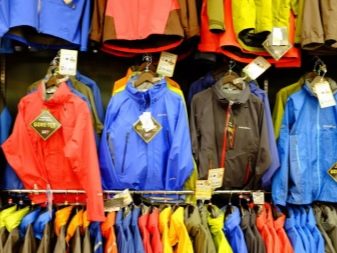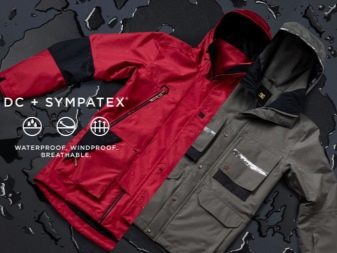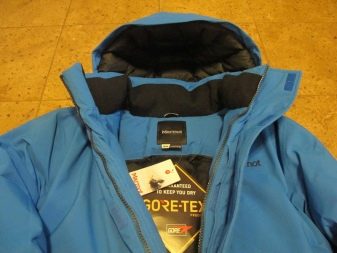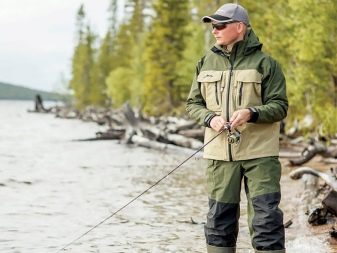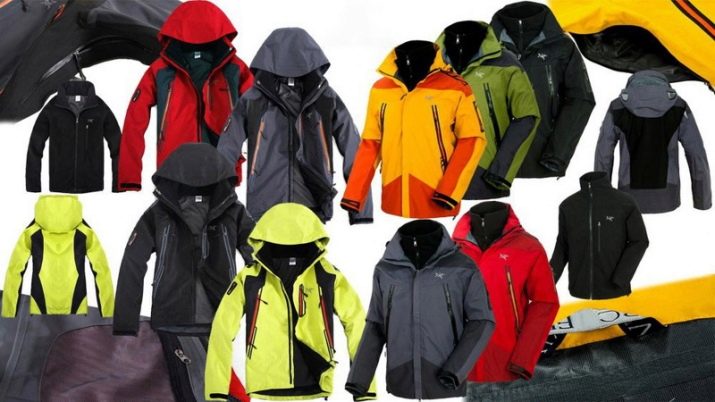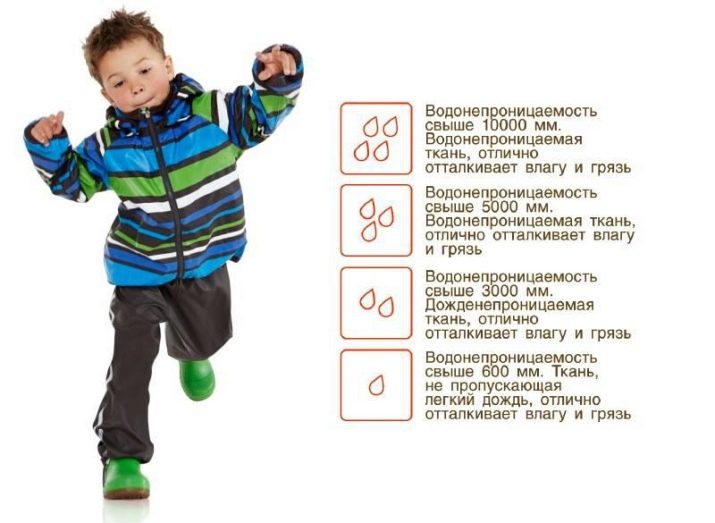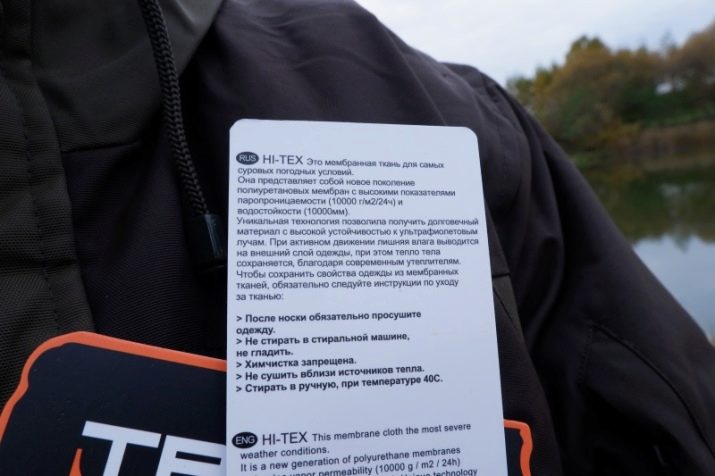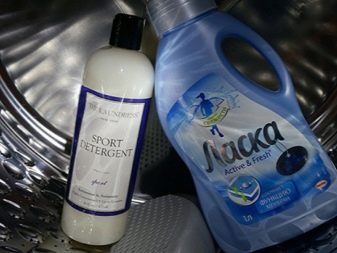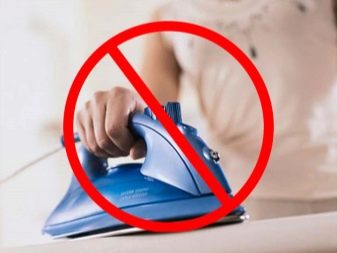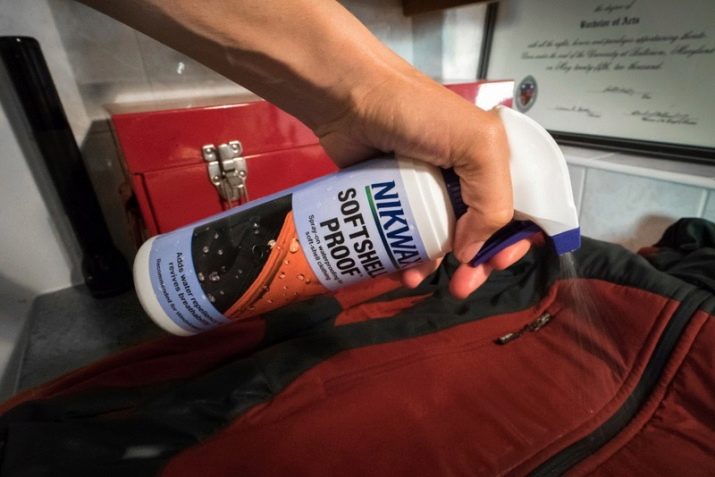One of the most popular materials produced with the use of innovative technologies is membrane tissue, in everyday speech referred to as a membrane. Clothes from it not only protects against rain, but also let the steam through, guaranteeing maximum comfort to its owner. It is enough for the latter to choose the most appropriate type of membrane tissue, paying due attention to the description of the characteristics of the material in question.
What it is?
The described fabric is a material of synthetic origin, belonging to the category of multilayer. Due to its properties, membrane products effectively repel moisture from the outside and at the same time do not prevent the evaporation from accumulating in the sub-space. The outer layer of such a fabric performs not only an aesthetic, but also a protective function, whereas the inner one is characterized by softness that promotes wearing comfort (in some cases, the lining can replace it).
As for the membrane itself, it is located between the layers mentioned above. This component of the fabric is a thin film made of high-molecular compounds and deposited on the base material. In Russia, the described fabric is produced on the basis of GOST 28486-90, the requirements of which it must fully comply with.
Composition
As mentioned earlier, the membrane is an important component of the material in question, but not its only component. The base of the latter is most often synthetic (for example, polyester), to which this film is “soldered”.
To date, for the manufacture of membrane tissues used several materials.
- Teflon. It has microscopic pores that effectively prevent the penetration of external and contribute to the evaporation of internal moisture. The main drawback is a gradual clogging.
- Polyurethane. The key feature is maximum water resistance. The main drawback of polyurethane products is a relatively slow evaporation of moisture accumulated in the sub-space.
- Polyester. The main advantages of this material - resistance to wear and high strength, thanks to which it can be used for many years. In addition, polyester is pleasant to the touch and keeps its shape.
Also, cotton is used to solve the described task, primarily remarkable for its ability to retain heat, and bamboo, which can boast of strength and hypoallergenicity.
Worthy of mention are the combined materials: due to the presence of a protective layer, they minimize the likelihood of membrane clogging and prolong its service life.
Properties
There are two main qualities of membrane tissues - water resistance and vapor permeability. The first provides protection from external moisture (for example, rain): the higher its value, the longer a person will feel dry. It must be borne in mind that the membrane can repel water for a certain time, after which the latter begins to penetrate into the underdog space. This describes the fabric is different from polyethylene and rubberized materials, completely impermeable to water, but not able to provide air exchange, optimal for humans.
With regard to vapor permeability, it determines how "breathable" is the membrane.The higher this value, the more comfortable it will be to wear clothes of this material with significant physical exertion.
As in the case of water resistance, the vapor permeability of membrane tissue has its limits, and therefore can not cope with its responsibilities, if sweating is excessively intense.
Other advantages of the material in question are worthy of attention, namely:
- maximum wearing comfort, eliminating stiffness of movement;
- universality thanks to which products from membrane fabric are suitable not only for adults, but also for children;
- good protection from strong winds;
- relative ease of removing contaminants.
We should also mention the shortcomings, the list of which is as follows:
- high cost of products (provided that they meet the established quality standards);
- the use of artificial components, not satisfied with the supporters of natural materials;
- not the highest resistance to wear, the specific value of which depends on the category of membrane tissue.
In addition, the described material is quite difficult to care for, as will be described in detail later.
Many people believe that membrane tissue warms well, but it is not. Removing excess moisture outside, it reduces the risk of cooling the body, but at low temperatures there should be two layers of warm clothing under it.
Types and their characteristics
Depending on the characteristics of its structure, membrane sheets are divided into 3 categories.
- Porous. The second name is hydrophobic. Due to the presence of micropores, it ensures the effective removal of moist air from the sub-pavement space to the outside. At the same time, this fabric retains water, providing its owner a feeling of dryness for a long period of time. A noticeable shortcoming of the materials in this category is clogged pores, the degree of which depends on the operating conditions of the product.
- Non-porous. This species, also referred to as hydrophilic, is characterized by the absence of microscopic holes in the membrane layer. With the removal of wet vapor to the outside, it copes through diffusion, suggesting their smooth transportation from the inner layer of tissue to the outer. Given the duration of this process, the owner of the product may experience some discomfort (it will seem to him that the clothes are soaked)
The effectiveness of non-porous tissue is particularly reduced, provided that the humidity outside is too high.
- Combined. Such materials organically combine the advantages of the two categories discussed above. Their manufacture involves the use of a hydrophobic membrane on which a relatively thin layer of polyurethane is applied. The minus of the paintings of the combined category is only one - high cost.
Also, depending on the design of membrane tissue, 3 other varieties of it are distinguished, each of which has its own remarkable characteristics.
Double Layer
In this case, the membrane has only external protection, and therefore involves the use of an additional lining (usually mesh). The absence of the latter leads to inevitable clogging and mechanical damage to the material, and therefore is unacceptable.
Such products, labeled as "2L", can boast a small mass and good vapor permeability. In addition, two-layer membrane fabrics are used in clothing, the inner surface of which has a warming layer.
Three-layer
The described type is marked as “3L” and provides for a more reliable, two-sided protection of the membrane. Due to this feature, the latter has an increased resistance to wear, which is an obvious advantage of it. The material in question looks like a fabric, the reverse side of which is covered with a fine mesh.
Despite its obvious advantages, the three-layer variety has one major drawback - its high cost. Given this circumstance, this fabric is used relatively rarely - mainly for the manufacture of professional equipment.
Lined knit
This type of membrane tissue, also called "2.5L", is a lot like a two-layer, but does not involve the use of a standard lining. Instead of the latter, a layer of foamed knit is used, which protects the membrane from mechanical stress and clogging.
The main advantages of this material are compactness and lightness. Special attention should be paid to the fact that these advantages do not detract from the other advantages of membrane tissue.
How to distinguish from conventional fabric?
There are several main ways to distinguish membrane tissue from normal. To buy a product with properties of interest and minimize the likelihood of acquiring a fake, the client only needs to adhere to the following recommendations.
- The simplest solution is to visit stores that sell products of proven brands.
- The price of a product made of membrane tissue cannot be low. This is due to the complexity of manufacturing this material, involving the use of advanced technologies.
- Often the name of the product in question contains the letter combination “-tex” (for example, “Sympatex” or “Gore-Tex”).
- Products of many popular brands are sold under license. If the seller does not sell fakes, he must have all permits.
In addition, the buyer can check the water resistance of the product at home, using an ordinary shower. As for the breathable properties, to determine them you need a container with hot water, located under the cloth, and glass, which the latter is covered.
If the material is a membrane material, it will allow steam to pass through, causing the glass surface to fog up.
Where does it apply?
Practice shows that the use of membrane tissues is justified in a variety of situations that require optimal air exchange and effective protection against high humidity. Such materials are especially appreciated by lovers of winter sports, tourism, mountaineering, hunting, fishing, and many other hobbies involving considerable physical exertion. In addition, membrane fabrics are suitable for the manufacture of children's clothing - jackets, suits and overalls.
It is also worth mentioning the undesirability of everyday use of products from the material in question. This circumstance is explained by three main reasons - the high cost of such products, the relative complexity of caring for them and the need to wear an additional layer of warm clothing.
Selection rules
Before you buy clothes made of membrane fabric, the buyer needs to consider the conditions in which they will be used. Following this recommendation, you can get exactly the product that optimally fits its tasks.
When choosing a suitable product, the buyer needs to pay attention to two key parameters - the previously mentioned water resistance and vapor permeability (for example, 7000/7000). Estimated values of the first are listed below:
- 3000 - slight rainfall, which lasts relatively short time;
- 5000-7000 - rain having an average intensity;
- 10000-15000 - strong and prolonged rain;
- 20000 - storm (products with such water resistance are intended for yachtsmen and lovers of extreme recreation).
To select a product with a suitable vapor permeability, the buyer should use the following list:
- 3000 - low level of physical activity (normal walking);
- 5000-7000 - slow movement on terrain with difficult terrain or jogging;
- 10000-15000 - maximum physical activity (skiing).
There may be several other interpretations, slightly different from the above.
Care instructions
In order for clothing made of membrane fabric to please its owners as long as possible, the latter should pay due attention to caring for it, which includes a number of important nuances. Washing such products involves certain features.
- The inability to use conventional detergents. This is because the washing powder clogs the pores of the membrane, significantly reducing the vapor permeability of the fabric. The same effect is observed after the use of bleach and air conditioners.
- Detergents containing chlorine act on membrane materials in a diametrically opposite way. They do not clog the pores, but increase them, increasing vapor permeability and deteriorating the water resistance of the fabric. Thus, the use of such funds will also have to be abandoned.
- To preserve the special properties of the membrane material, it can not be machine washed. For the same reason, experts do not advise soaking and squeezing such fabrics.
Drying clothes made of membrane materials should be parallel to the surface of the earth, after straightening, at a temperature of 15-25 ° C. Other significant conditions include good air exchange between the room and the surrounding space, as well as the inadmissibility of direct sunlight on products.
It is impossible to iron clothes from membrane fabric. Ignoring this rule can destroy the structure of the material, which is very sensitive to high temperatures.
To restore the water resistance of the described fabric is used a special impregnation - spray or liquid. This tool forms a film that has several positive qualities. In addition to returning water repellency, it:
- does not reduce the vapor permeability of the material;
- increases tissue resistance to dirt;
- reduces the negative effects of ultraviolet radiation.
Processing products with the use of impregnation should be carried out after washing. It is also worth considering that in some cases the fabric may slightly change its original shade.
Storing clothes made of membrane materials implies the observance of two conditions - pre-straightening and vertical positioning. In addition, it is desirable to cover such products with polyethylene that prevents dust from entering their pores.
In conclusion, it remains to be noted that an increasing number of consumers give preference to membrane tissues. The advantages of such materials are obvious to every lover of an active lifestyle, which regularly finds its practical confirmation.
How to choose membrane clothing, see the following video.
